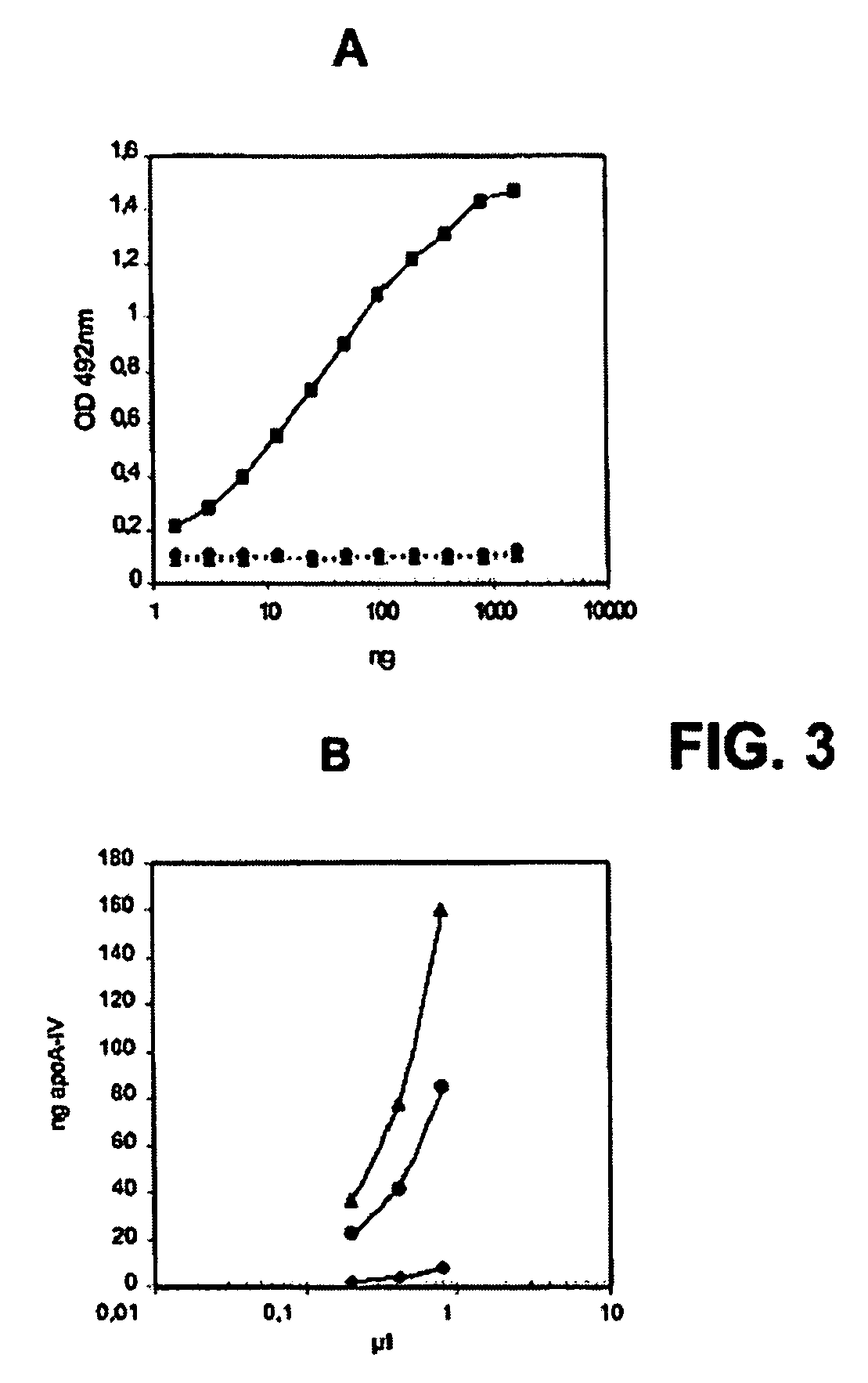Method of diagnosing changes in the intestinal absorptive surface in an individual
- Summary
- Abstract
- Description
- Claims
- Application Information
AI Technical Summary
Benefits of technology
Problems solved by technology
Method used
Image
Examples
Embodiment Construction
[0029] The method of the present invention, by using both ELISA sandwich and Western blot assays, is illustrated bellow in two representative paediatric pathologies with intestinal failures (foetal alcohol effects and coeliac disease) and in two intestine atrophy models in adults (parenteral nutrition and fast-refeed nutrition). In rat model, inventors have previously shown that etanol consumption by the mother during gestation causes intestinal disorders in foetus and new-born (cf. L. Camps et al., “Effects of prenatal exposure to ethanol on intestinal development of rat fetuses”; Journal Pediatric Gastroenterol. Nutr. 1997, vol. 24, pp. 302-311, and references therein), and some clinical cases in humans have also been published (cf. S. Tourtet et al., “Small intestine atresia and abnormal insertion of the umbilicus in a child with fetal alcohol syndrome”; Archives de Pediatrie 1997, vol. 4, pp. 650-652, and references therein). Coeliac disease (intolerance to gluten of the diet) i...
PUM
 Login to View More
Login to View More Abstract
Description
Claims
Application Information
 Login to View More
Login to View More - R&D
- Intellectual Property
- Life Sciences
- Materials
- Tech Scout
- Unparalleled Data Quality
- Higher Quality Content
- 60% Fewer Hallucinations
Browse by: Latest US Patents, China's latest patents, Technical Efficacy Thesaurus, Application Domain, Technology Topic, Popular Technical Reports.
© 2025 PatSnap. All rights reserved.Legal|Privacy policy|Modern Slavery Act Transparency Statement|Sitemap|About US| Contact US: help@patsnap.com



